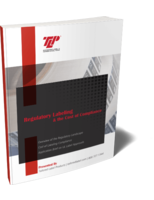Pressure Sensors / Detectors / Transducers
Pressure Sensor operates in hostile hydrogen applications.
Share:
Press Release Summary:

Exhibiting resistance against hydrogen permeation and embrittlement, Model 4600 ExplosionProof Pressure Sensors install directly on outlet valve to perform condition monitoring. Construction includes 316L stainless steel wetted parts and one-piece 316L diaphragm free of internal O-rings, welds, or fill fluids. Product, offered with outputs of 0.5-4.5 V ratiometric, 1-5 V, 1-6 V, .25-5 V, or 4-20 mA, features accuracy of less than ±0.25% BFSL at 77ºF.
Original Press Release:
Pressure Sensor Built to Operate in Hostile Hydrogen Application
Landing, NJ, March 7, 2005... Hydrogen is gaining popularity as an alternative fuel supply to foreign oil. Hydrogen salvage and distribution systems currently in development to handle this fuel efficiently require pressure sensors for condition monitoring. The pressure sensors are installed directly on the outlet valve, close to the tank. Dependent upon size, these tanks can experience pressures ranging from 1,000 to 12,500 psi.
While hydrogen, itself, is an environmentally friendly element, hydrogen atoms, when split into a hydrogen ion (two H+ atoms), can penetrate through thin metal diaphragms. When contracted for a pressure sensor to perform condition monitoring in a hydrogen application, American Sensor Technologies specified its Model 4600 ExplosionProof Pressure Sensors, which offered material compatibility and resistance against hydrogen permeation and embrittlement.
Employing a one-piece thick diaphragm 316L diaphragms, free of internal O-rings, welds or fill fluids, the Model 4600 are built to keep hazardous media out, eliminating the chance of hydrogen permeation and eventual sensor failure. Pressure transducers employing thin isolation diaphragms with fluid fill are prone to hydrogen permeation that will eventually cause outward expansion of the isolation diaphragm, leading to cracks and sensor failure through loss of fill fluid.
Weld-free joints also help to reduce or eliminate hydrogen embrittlement that reduces the mechanical properties of metal, leading to transducer failure. To further protect pressure units against embrittlement caused by long-term exposure to hydrogen, the Model 4600 Pressure Sensors are constructed with wetted parts made from 316 L stainless steel, which promote long life and resistance to media corrosion. This high strength material also promotes good overrange and burst protection
Approved to CSA 30 (UL 1203) Class 1, Div. 1, Explosionproof, Groups A, B, C, and D, Model 4600 Pressure Sensors can withstand high vibration and temperature extremes typically found in hydrogen applications.
American Sensor Technologies also utilizes its own-patented Krystal Bond(TM) Technology to further enhance sensor performance by reducing long-term drift to just 0.25% per year, which is much tighter than epoxy-based strain gauge systems. Krystal Bond Technology utilizes an inorganic bond, free from glue line failure and outgassings, as typically found in organic-based systems.
Krystal Bond Technology also provides for a high electrical isolation up to 1000V, a high degree of compensation and the ability to adhere to different diaphragm material, which allows a wide range of media to be easily handled.
AST offers all its Model 4600 pressure sensors with outputs of 0.5-4.5 V ratiometric, 1-5V, 1-6V, .25-5V, or 4-20mA. Units offer accuracy of < ± 0.25% BFSL at 25ºC (77º F) and long-term stability of ±0.25% full scale output per annum. AST4600 pressure sensors are available with an output of 1-5 V, 1-6V or 4-20mA. They can be configured with a variety of pressure ports and whetted materials.
For more information, visit AST's web site at www.astsensors.com.
About AST
AST manufactures state-of-the-art, MEMS-based pressure sensors, transducers, and transmitters that offer the best price-performance ratio in the industry. Common applications of AST sensor products are in industrial OEM, hydraulic systems, fuel cells, medical gases, HVAC/R, refrigeration (ammonia, Freon, CO2), oil & gas exploration and production, and off-road vehicles. By combining exotic metals and AST's exclusive, proprietary Krystal Bond(TM) Technology (an advanced process in which inorganic materials are molecularly diffused onto a metallic surface in the presence of certain gases), AST can produce high-performance strain gauge pressure sensors that support the specialized needs of key niche markets. Many AST products are UL listed as intrinsically safe and certified for explosion-proof required environments. Some of the world's most highly respected industrial Fortune 500 corporations have tested and now use AST products in a wide range of critical and harsh environments. For more information on AST products and technology, go to AST's website at www.astsensors.com.




